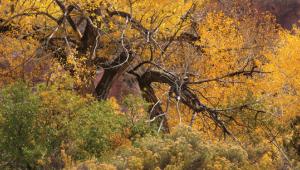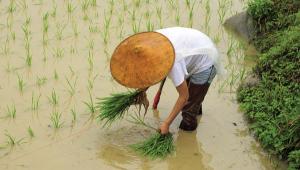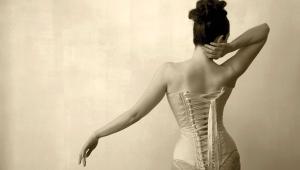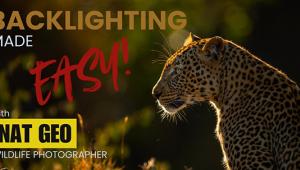Playing In The Band; Jim Richardson’s Graphic Novel

All Photos © Jim Richardson
“They’re concerned for Dale’s health,” says National Geographic photographer Jim Richardson, “and they also know that if Dale can’t keep the store going, they won’t have a grocery. In a town of maybe 200 people, it’s the way life is. That’s the way people look out for each other.”
“The way life is” in Cuba, Kansas, is the point of Jim’s ongoing personal project. “Ongoing” meaning going on
36 years.

As a photographer for the Topeka Capital-Journal in the mid-1970s Jim enjoyed what he calls “the everyday hubbub of news photography,” but what inspired him most was the work of great documentary photographers and photojournalists like W. Eugene Smith, David Douglas Duncan, and Henri Cartier-Bresson. “I was most taken with Cartier-Bresson,” Jim says, “because he photographed not great events of the world, but the everyday life of countryside and urban France, and he elevated it to art. I wanted to do something like that…something that had more lasting value than the typical news picture in today’s paper.”
So in addition to photographing “the small-town kinds of events—the big ball of twine stuff, the mule jumping contests, the rattlesnake hunts, the oddities” for the Capital-Journal, he began doing documentary photography on weekends, thinking of a book that would reflect the rural Kansas in which he’d grown up. When he decided he needed to add images of adolescent life, he began photographing at the high school in Rossville. “I ended up doing photography there for three years, and that ended up being the book High School USA. Photos were published in Life magazine, and a story that was published in the Capital-Journal was nominated for a Pulitzer Prize.”

During this period Jim had also been photographing in Cuba. “I began to realize that what mattered were the stories of people’s lives…so I decided to focus on Cuba. I had no particular timetable. I thought I’d spend a year or two photographing there and publish a book or something like that.”
The year or two now stands at 36 and counting, and along the way came Cuba stories in Kansas newspapers, a mid-1980s touring AV show titled Reflections From a Wide Spot in the Road, coverage on national television shows and a 22-page story in National Geographic in 2004.
Over time Jim’s become a part of the Cuba community rather than just a visitor. “I suppose I started out enamored of the idea of the objective documentary photographer,” he says, “but at least for this kind of subject I came to fundamentally question the whole idea of objectivity and its value.

It really changed how I worked and how I saw the place. In the beginning I was taking a lot of wrinkled faces and weathered wood on the side of barns pictures.”
He tightened the focus, asking himself, what’s the subject? And, what’s of value here? “The pictures had to be in service to the story, and so they became images of what I saw of the people, what they did in their daily lives and their relationships.”
The work went from a fly-on-the-wall look at the town to, he says, “the kinds of things you’d observe and comment on if you were writing a novel. The story had to have weight and meaning, and that came with time and the observations of a participant, not just an observer.”

And he means literally a participant. “The town band was led by the local plumber—he was a great musician, played a button accordion. The band would get together and practice on a little platform that sat on the middle of Main Street; cars would drive by within about 3 feet.” But they didn’t have a tuba in the band, and they needed one, and Jim had played the tuba in high school. So he went to a music store in Topeka, found an old, junked E-flat tuba, bought it and started to learn to play all over again. “So I played in the town’s band and learned all the polkas and schottisches—it’s a Czech community, so they play all those songs, and Sousa marches as well. And I drank a lot of beer and listened to a lot of stories and people figured out who I was and what I was doing, and I was welcome.”
That transition from fly-on-the-wall to member of the community made a difference in the photographs. “It’s not that they ignore you or they don’t know you’re there—you are there, but now you’re socially part of the group. In fact, you have to be socially part of the group—that’s how you disappear into the group, into the social moment of the group and whatever is natural for that moment.”
There was also another aspect to it: the group’s awareness of the power of the photographs. “I’m convinced of it, and it happens much more than people realize,” Jim says. “The people you’re photographing know they’re speaking, that their image is saying something; often they know they’re sending their message, that they’re getting to express their lives.”

Jim began the project in black and white—he was, after all, influenced by the great photojournalists. Today he shoots his Raw files in color and converts them to black and white in Photoshop. “The problem is,” he says, “the digital black and white looks so much better than the old Tri-X in Acufine. If you really want to make it look of a piece, you have to throw in some noise and cut about five stops off the dynamic range. Grain was truth back then, right? I think many people took the difficulty of getting the image and substituted it for the actual value of the image—the ‘oh, my gosh, you got the shot’ factor.”
What hasn’t changed is Jim’s style. “What I always did on this project was simple and straightforward. I didn’t want it to be about the photography; I wanted it to be about what was going on inside the picture. I did a heck of a lot with two lenses—the 28mm and the 85mm. I never went exotic—no 300mm lenses, no super wides.”
What was as important as his approach and his blending into the community was trust. “What I always did was take the photos back to the town and show the people what I was doing, and that assured them that I wasn’t out to get them, that I really cared, and that it was okay for them to be the way they really are.
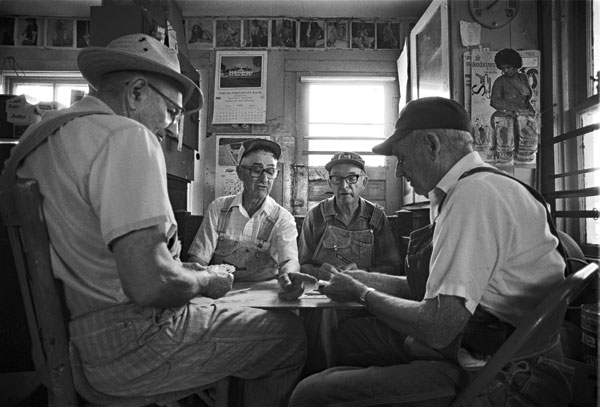
“There’s a really nice thing that I take as one of my triumphs in my photographic career. Jeannine Kopsa was a woman who organized a lot of the town’s events, and when somebody asked her about my pictures she said something on the order of, ‘Everyday life always looks more important when Jim takes a picture of it.’ That’s kind of what I meant all along. Things happen in people’s lives, there’s drama and value in the everyday. This has been my education for the last 36 years.”
He’s found that the knowledge applies around the world. “It makes a huge difference when I go out doing stories for National Geographic. If I end up in some little town in India or Ireland, certain things are going to happen, and I have some idea of what I should be looking for in terms of pictures. There will be somebody who is the organizer, there’ll be a place where the people gather, and there will be these little daily events.”
And maybe, someday, there’ll be the need for another player in the band.

There are more photos from Cuba, Kansas, as well as images from Jim Richardson’s National Geographic assignments at his website, www.jimrichardsonphotography.com.
- Log in or register to post comments




